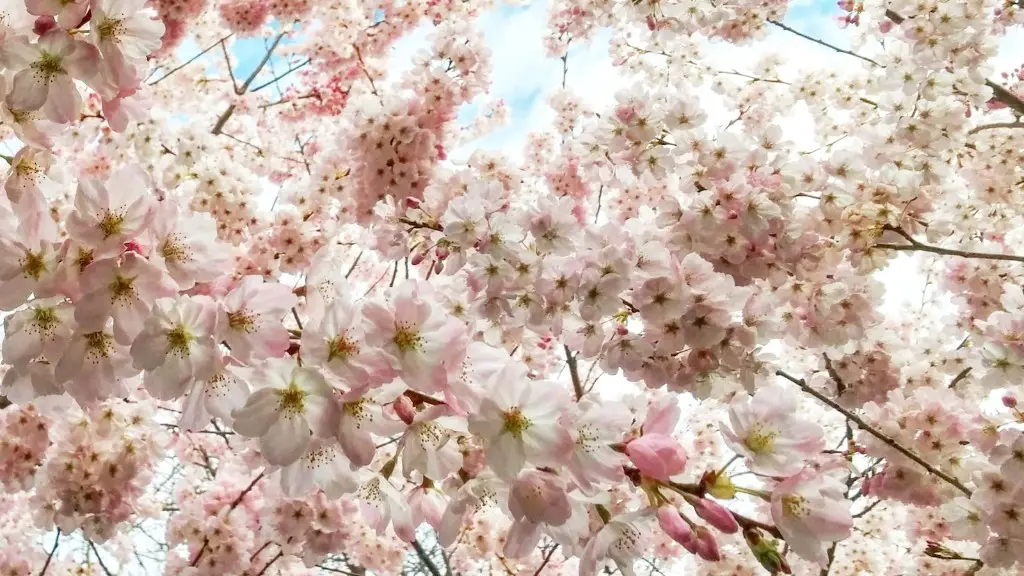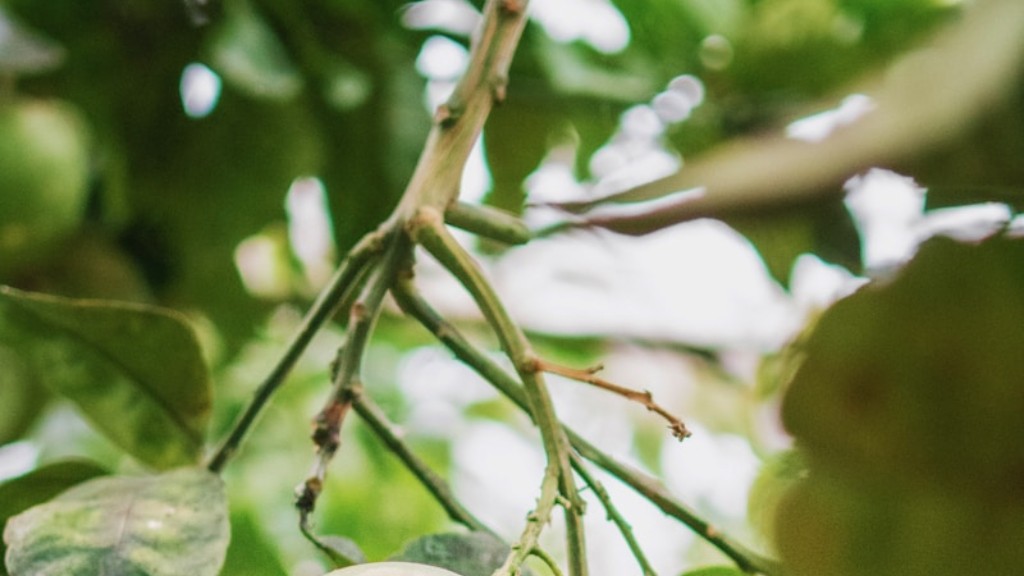How to tell if a palm tree is dying
From their tropical origins, palm trees are an exotic addition to the landscape of any garden. One of the most common plants in the warmer climate regions, these majestic beauties can grow for decades, but can also start to die if neglected. Below, we will discuss key signs that indicate your palm tree is at risk of dying and what you can do to save it.
Signs of Deterioration
Palm trees, like other plants, have a natural life cycle. As the tree matures, its trunk will begin to thin, and eventually bare a grayish hue. Furthermore, the leaves of the tree will begin to thin out gradually and turn yellow or brown as they droop. If there are any small branches or fronds growing near the main trunk, they may fall away at an alarming rate. In extreme cases, palm trees may prematurely shed their entire canopy of leaves.
Environmental Changes
Environmental changes can also lead to a palm tree’s death. Dry spells, long-term drought or heat waves can put stress on a tree and cause its health to suffer. If a tree is planted in poor soil or there are significant variations in the elevation of the land, the tree can also struggle to grow and may become easily susceptible to disease and pests.
Common Causes of Death
Fungal diseases, especially those caused by Phoma or Ganoderma, are one of the most common causes of death in palm trees. These fungi can spread quickly throughout the tree, gradually forming cankers that cause the fronds to wilt and the spine of the trunk to lose its strength.
In certain areas, such as Florida, the most frequent cause of death for palm trees is the Lace Bug. This pest can quickly spread from tree to tree and destroy their tissue, again leading to yellowing and wilting of the fronds.
How to Save Your Tree
The first step to saving your tree is to identify the cause of the problem. If a tree is affected by Phoma or Ganoderma, fungicides may be applied to the trunk to stop the fungus from spreading. To identify pest infestations, leaves and bark should be inspected and treated with pesticides if necessary.
Additionally, trees should receive proper care including regular fertilization and irrigation. Trees should be planted in an area with well-drained soil, and, if possible, should be planted in a place that encourages air circulation. In extreme situations, a tree may also need to be cut down and replaced with a new palm tree.
Prevent Damage to Tree
Fortunately, there are several ways to ensure the longevity and vibrancy of your palm tree. Gardeners should begin by routinely inspect their palm tree for signs of disease or pest infestations. If the tree is close to other trees, it may also be wise to prune the branches of neighboring trees in order to encourage better air circulation and to prevent disease transmission.
It is also important to keep the area surrounding the tree clear of any debris or weeds that may impede the tree’s growth. Any leaves that have fallen off the tree should be raked away immediately and gardeners should also be sure to properly dispose of any dead leaves or tree parts that could introduce disease or pests.
Finally, it is essential to be aware of the environmental conditions that your tree is exposed to. If there are extended periods of drought or if temperatures begin to drop, it is wise to water and fertilize your tree in order to ensure its health.
Fungicides and Pesticides
In order to protect a palm tree from disease, fungicides may be applied to the trunk and soil where applicable. For certain fungi, systemic fungicides may need to be used to prevent the disease from spreading. Systemic fungicides are absorbed by the tree and then travel through the tissue in order to treat the infection.
In the case of bug infestations, special attention must be paid to the type of pest. Different bug species will require different treatments and some may require regular spraying throughout the season. Horticultural oil or insecticidal soaps are two common methods that are used to target pest populations and keep them from overwhelming a tree.
What to Look Out For
Palm tree owners should look for certain signs that indicate a tree may be in distress. If the tree is starting to change color from green to yellow or brown, the tree may be at risk of dying. Furthermore, if the trunk of the tree is starting to thin and bend, or if large patches of bark are missing, these are indicative of a serious problem.
Additionally, if the branches or fronds of the tree are beginning to drop, or if there is evidence of insects in the tree, it is important to take action. Lastly, if the tree is losing its usual symmetry or is unusually wilting even in good growing conditions, it is time to take the necessary steps to care for a tree.
Create Supportive Environment
In order to ensure the optimal health of your palm tree, it is important to create a supportive environment for it. If a tree is planted in an area with poor soil, consider using a soil amendment to improve the conditions and create new pathways for the roots to absorb water and nutrients. Similarly, if the area around the tree is covered in a dense layer of weeds or trash, rake the ground and weed the surrounding area.
The environment surrounding the tree should also be monitored with respect to the amount of sun and moisture the plant is exposed to. If it is overly sunny, consider planting shrubs to provide some shade. If the tree has either too little or too much water, be sure to address the issue immediately as this can deprive the tree of essential nutrients.
Pruning for Better Airflow
Lastly, pruning should be done carefully and regularly to keep the top of the tree clear. This allows for better airflow, allowing the tree to get the light it needs while also reducing the stress on the branches. If pruning is done correctly, the tree will benefit from the improved light and air circulation, and the dead branches may even act as a support for new and healthy fronds.
Proper Care and Maintenance
In summary, those looking to keep their palm tree healthy should monitor the tree closely and be on alert for any sudden changes in color, texture or symmetry. If health of the tree begins to suffer, the causes should be addressed soon to minimize damages and avert death of the tree. Furthermore, good care should also be taken to ensure the tree is in an appropriate environment, free of pests and fertilized, watered and pruned regularly. With vigilance and love, a palm tree can remain healthy and majestic for years to come.


